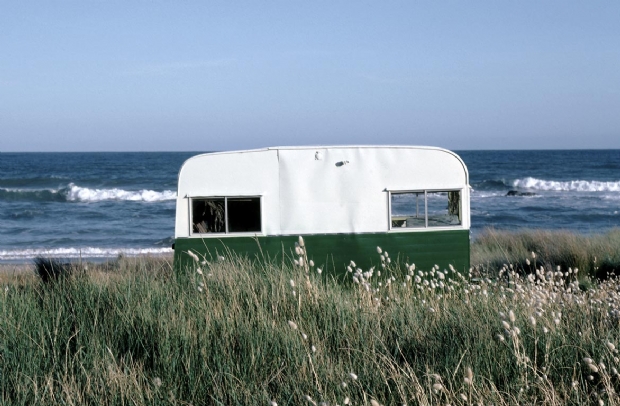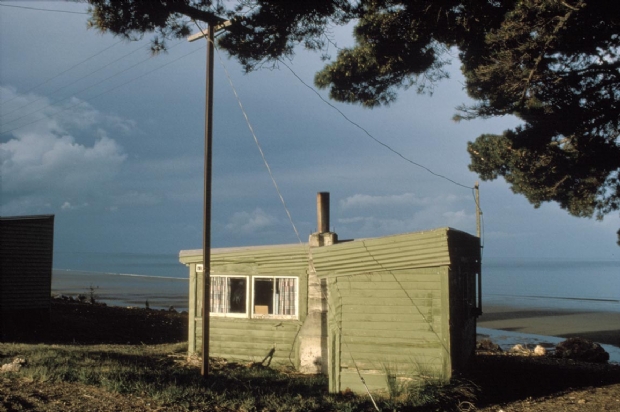|
April 10, 2009
Over at alfotonet.org on Flickr s2art comments on contemporary photography. He says that:
in this day and age of highly wired communities, [it is] nothing more than a hunter gatherer pursuit. An excuse to wander and look, to pause "briefly" and reflect, and for some wonder, at the world presented back to them. but then; what to do with all those images?
Reading David Eggleton's Into the Light: A History of New Zealand Photography provides an answer to s2art's question. The text indicates that it was common practice for New Zealand photographers in the 1980s to publish their work as photobooks.
Robin Morrison is one example. My eye was caught by his The South Island of New Zealand From the Road (1981); caught because I had been making the same kind of journey on a much smaller scale.
 Robin Morrison, Caravan, Seddonville, West Coast, New Zealand, 1979
Robin Morrison, Caravan, Seddonville, West Coast, New Zealand, 1979
This kind of work is a break from the coffee-table books that flood the market with their pumped up colours, shop worn imagery, and the kitsch subjects of Pictorialist Romanticism.
 Robin Morrison, Cabin at Pakawai camping ground, Golden Bay. 1979
Robin Morrison, Cabin at Pakawai camping ground, Golden Bay. 1979
Rhonda Bosworth says in Art New Zealand that Morrison's work is:
based firmly in a documentary tradition. He is essentially, to use John Szarkowski's definition, a 'window' rather than a 'mirror' photographer. That is to say, he explores and interprets the world in photographs specific to time and place rather than using the medium as an inward-looking means of self-expression.
From the Road abounds with photographs of people, unusual gospel halls, post offices and pubs, odd examples of deco architecture. Morrison is seen as the chronicler of that half-mythic landscape – the flatlands and caravans, the baches and pubs, the vast skies and the remoteness.
|

photobook publishing continues today by many, for me it takes the form of e-books.
http://stunik.com/e-books/